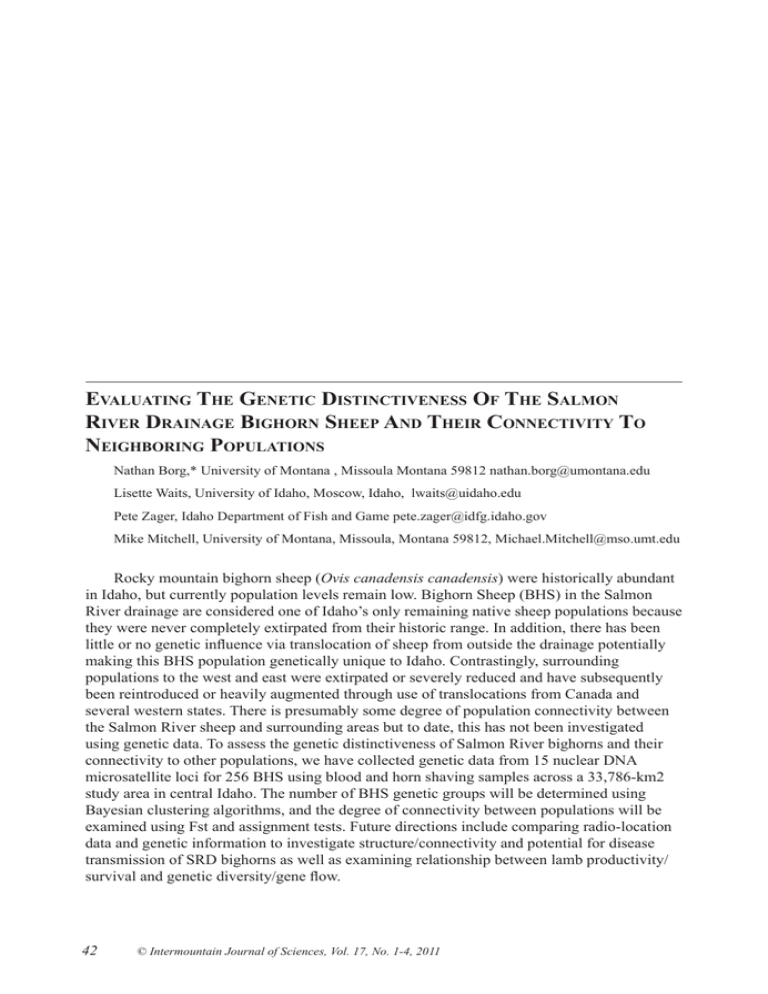e t g d
advertisement

Evaluating The Genetic Distinctiveness Of The Salmon River Drainage Bighorn Sheep And Their Connectivity To Neighboring Populations Nathan Borg,* University of Montana , Missoula Montana 59812 nathan.borg@umontana.edu Lisette Waits, University of Idaho, Moscow, Idaho, lwaits@uidaho.edu Pete Zager, Idaho Department of Fish and Game pete.zager@idfg.idaho.gov Mike Mitchell, University of Montana, Missoula, Montana 59812, Michael.Mitchell@mso.umt.edu Rocky mountain bighorn sheep (Ovis canadensis canadensis) were historically abundant in Idaho, but currently population levels remain low. Bighorn Sheep (BHS) in the Salmon River drainage are considered one of Idaho’s only remaining native sheep populations because they were never completely extirpated from their historic range. In addition, there has been little or no genetic influence via translocation of sheep from outside the drainage potentially making this BHS population genetically unique to Idaho. Contrastingly, surrounding populations to the west and east were extirpated or severely reduced and have subsequently been reintroduced or heavily augmented through use of translocations from Canada and several western states. There is presumably some degree of population connectivity between the Salmon River sheep and surrounding areas but to date, this has not been investigated using genetic data. To assess the genetic distinctiveness of Salmon River bighorns and their connectivity to other populations, we have collected genetic data from 15 nuclear DNA microsatellite loci for 256 BHS using blood and horn shaving samples across a 33,786-km2 study area in central Idaho. The number of BHS genetic groups will be determined using Bayesian clustering algorithms, and the degree of connectivity between populations will be examined using Fst and assignment tests. Future directions include comparing radio-location data and genetic information to investigate structure/connectivity and potential for disease transmission of SRD bighorns as well as examining relationship between lamb productivity/ survival and genetic diversity/gene flow. 42 © Intermountain Journal of Sciences, Vol. 17, No. 1-4, 2011



